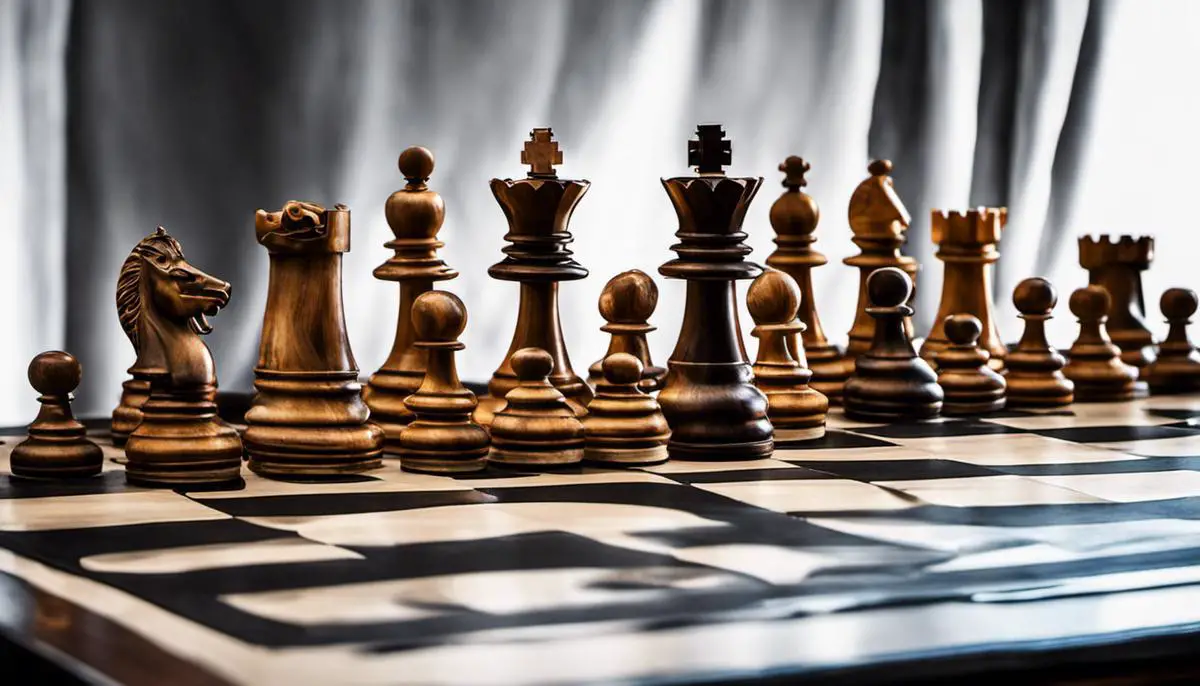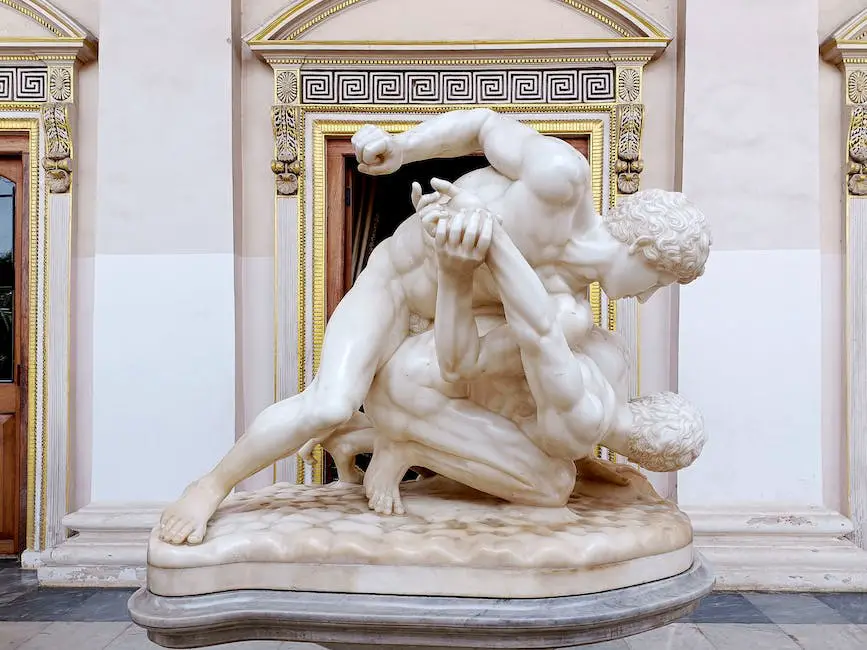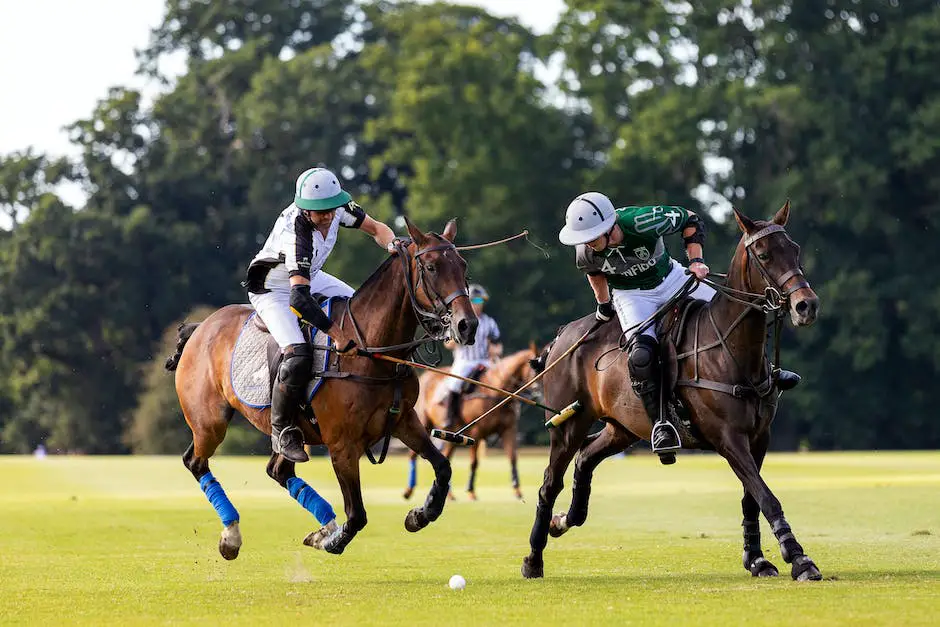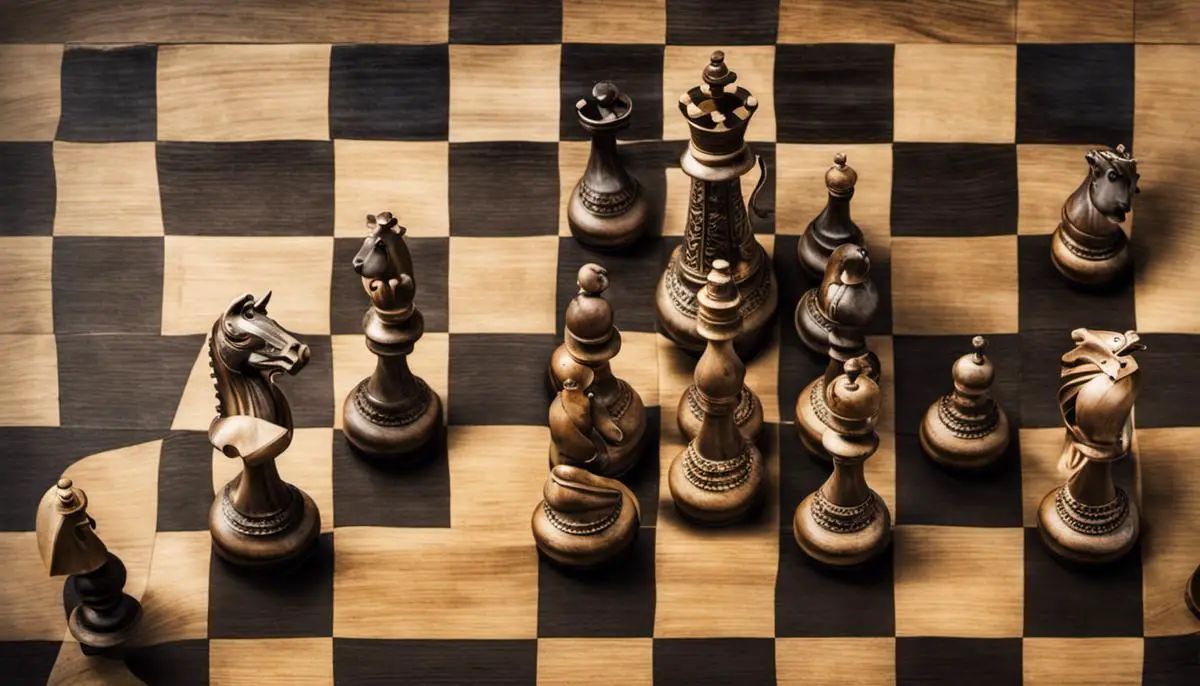Venturing into the past brings a rich trove of fascination – not only does it illuminate how societies functioned, but it also provides insight into the leisure activities that enthralled our ancestors. In ancient Persia, besides grand architectures and poetic symphony, games and sports held an integral place in society. These games, enveloped in ancient rituals, tactics, and traditions, tell tales of social gatherings, strategic prowess, and cultural celebrations. A careful exploration of some of these popular Persian games like Chess, Nard, Pahlavani Wrestling, Polo, and Asal Bazi brings evidence of the profound historical depth and cultural complexities of Persian society.
Chess and Its Origins
Chess and Its Origins
Chess, as we know it today, has its roots in the ancient kingdom of Persia. Originally known as “Shatranj,” this game of strategy and intellect was considered a noble pastime and was often used to educate royalty and nobility in matters of war and strategy. The folk tale “Chatrang Namak” states that the game was invented in Persia by a prince of India, who sent it as a diplomatic gift during the early 6th century.
Rules and Game Play
The game itself underwent several changes when it was adopted by the Persians. Initially, Shatranj was played on an 8×8 uncheckered board, similar to the chess boards of today. The pieces included a king (Shah), a general (Vazir), two elephants (Fil), two horses (Faras), two chariots (Rukh), and foot soldiers (Piyadeh). Each had its unique moves. The gameplay aimed to checkmate (Shah-mat, which means ‘the king is helpless’) the opponent’s king—similar to how modern chess works.
Cultural Significance
In ancient Persian society, chess was more than just a game—it was a tool for teaching military strategy, mathematics, and the art of war. It was considered a game of the ‘intellectual elite’, and ability in chess was seen as a reflection of a person’s military prowess and strategic capabilities.
Evolution Over Time
As Persia was conquered by the Arab Muslims during the mid-seventh century, chess began to spread to the Islamic world, and subsequently to Europe through the Moors in Spain. Each new culture added their own tweaks to the game – the elephants became castles (rooks), and the general became vizier, which later evolved into the powerful queen piece in the modern game. By the end of the 15th century, the game took its modern form—with the pieces, moves, and rules that we recognize today.
Symbolism in Chess
Chess has often been perceived as a metaphor for life itself – with each piece symbolizing different facets of society. The pawns represent the common folks, knights symbolize nobility, rooks stand for home and castle, etc. This symbolic representation in conjunction with strategic gameplay has made chess a game that is greatly respected and appreciated across generations and cultures.
Chess: An Age-Old Persian Game Today
Chess, marked by its strategic gameplay and hierarchical structure, is still enjoying popularity today. This globally recognized game takes its roots from ancient Persia and thrives upon the sense of duality, similar to that of battling kingdoms. Although modern chess has evolved, it significantly owes its existence to Shatranj – a popular game that decorated the royal courts of Persia centuries ago.

Backgammon in Ancient Persia
The Deep-Rooted Legacy of Backgammon in Persian History
Moving further back into Persian history, we encounter another gamut of strategic gameplay – Backgammon, or “Nard” as referred by the Persians. This game, known to be one of humankind’s oldest board games, ties back nearly 5,000 years to the Persian Empire. Archaeologists excavating the ancient city of Shahr-e Sukhteh, often referred to as the “Burnt City,” discovered a game board and pieces reminiscent of modern Backgammon, thus cementing its longstanding Persian origins.
Rules and Gameplay
Historically, the rules of Backgammon in ancient Persia were a little different from those known today. The game was played on a specially designed board with two sets of 15 pieces, segregated into two classes: five dark and ten light pieces. The 12 places on the board represented the 12 months of the year, while the 30 pieces symbolized the days in a month. Players would move their pieces according to the roll of dice. The primary challenge was to remove all of one’s pieces from the board before the opponent. The player who achieved this was deemed the winner.
Significance in Persian Culture
Nard, or backgammon, held a unique spot in the cultural fabric of ancient Persia. It was not just a game but a significant social catalyst, serving as a medium for interaction among individuals of differing social classes. Whether in the royal courts or the local markets, backgammon matches were common, uniting individuals from all walks of life over shared amusement and competition.
Backgammon in Persian Literature and Art
Like all aspects of Persian culture, backgammon made its presence felt in literature and art. It was often alluded to in poetic references and depicted in miniature paintings. Renowned Persian poet Omar Khayyam used backgammon analogies in his works, while visual portrayals of courtly life frequently featured people engrossed in a game of backgammon. These occurrences underline the game’s ingrained presence in socio-cultural narratives.
Backgammon as an Educational Tool
Apart from entertainment, backgammon also served as an educational tool in ancient Persia. Scholars believed that it taught strategic thinking, planning, and predictive skills. The game was known to be frequented by astronomers and scholars as a leisure activity, fostering intellectual discourse and exchanges.
Backgammon: An Ancient Game with Universal Appeal
Backgammon, an ancient Persian game, has proved its timeless charm as it traversed through different regions of Asia, Europe, and North Africa. It was spread by traders, soldiers, and travelers who were smitten by the game. While each culture slightly tweaked the game’s rules, resulting in a wide variety of variations we witness today, the core essence of the original Persian game remains preserved in the modern version of backgammon. Therefore, its enduring popularity serves as an emblem of this ancient pastime’s eternal allure from Persia.

Traditional Persian Wrestling
Pahlavani Wrestling: A Symbol of Persian Strength and Culture
Drawing from the rich and diverse fabric of ancient Persian culture, Pahlavani wrestling, or locally renowned as “Zoorkhaneh,” has a history that rolls back to the Parthian era, over two millennia ago. This ancient sport has served numerous roles in Persian history, from enhancing military prowess and boosting bodily strength to promoting noble behavior and fostering national unity. With time, Pahlavani wrestling evolved from a mere competitive game, it transformed into a colossal pillar of Persian cultural and spiritual identity, symbolizing tenets of honor, generosity, and self-sacrifice.
Traditional Rules and Rituals
The rules and rituals of Pahlavani wrestling strike a unique balance between competitive sport, religious practice and traditional theatre. Generally, the bouts are held within a circular pit, with each round known as a ‘dand’. The winner is the wrestler who manages to pin his opponent’s shoulders to the ground. However, it’s not just about strength and technique; respect for the opponent and the audience is highly emphasized. Before the match, wrestlers perform a ritualistic warm-up dance, working through a predetermined series of spins and squats, accompanied by traditional Persian music and chanted poetry. These rituals also involve respecting the wrestling attire, the ‘Pahlavani shorts’, a form of traditional Persian uniform adorned with seven mystical and religious emblems.Pahlavani Wrestling in Contemporary Iran and Beyond
Despite the passage of millennia, Pahlavani wrestling remains a popular sport in modern Iran. Wrestling schools, known as ‘Zoorkhanehs’, are still widespread and revered, hosting regular matches and training sessions. Apart from serving as physical training hubs, these venues also function as cultural centers, maintaining the ethical code of “Javanmardi” or chivalry. Pahlavani wrestling’s influence isn’t limited to Iran; its techniques and fights have had a significant impact on different forms of traditional wrestling in various cultures. In particular, the sport has similarities with Turkish oil wrestling, demonstrating the strength of its cultural exchange across regions. Other countries with noticeable influences include India’s kushti wrestling and Mongolian Bökh.Pahlavani Wrestling: A Legacy of Strength
Acknowledged by UNESCO in 2010 as an Intangible Cultural Heritage, Pahlavani wrestling stands as a pillar of Persian culture. This recognition reflects the sport’s profound cultural and historical roots, considering the wrestling form as a significant representation of social practices, rituals, and festive events that personify cultural heritage and diversity. A complex blend of physical prowess, cultural customs, and spiritual elements, Pahlavani wrestling is an intriguing depiction of ancient Persian games. Its ongoing relevance and popularity in Iran, in addition to its impact on other cultures, attest to its integral role within Persian history and culture.
Polo: A Persian Invention
Polo: Birthed in Persia
Commonly known as the ‘game of kings,’ Polo traces its origins back to the 6th century B.C. in Persia. Conceptualised primarily as a sport for royalty and to train cavalry and king’s guards, Polo provided a platform to develop valuable warfare skills such as charging, equestrianism, marksmanship, and teamwork. The sport served a dual purpose – while it offered exciting engagement for the royals, it also replicated battle scenarios to prepare soldiers for actual combat situations.
Original Rules of Polo
In its primitive state, Polo was considerably more intense and violent as compared to its modern form. An immense playing field was set, often several miles long, with 100 participants on each side. The primary aim was to seize the opponent’s flag while protecting your own. Soldiers would ride around the field with their horses, using their mallets not just to control the ball, but to block the opposing team. As Polo was devised as a military training exercise, it often resulted in injuries and sometimes fatalities. However, over centuries of evolution, the game has been honed to its current form which elicits a spirit of chivalry between its players.
Required Skills in Polo
Throughout its various stages of development, the fundamental requirement of Polo remains the same: an excellent level of horsemanship. Other skills necessary to partake in this intensive sport include, strength, accuracy, superior hand-eye coordination, and swift decision-making ability. On the tactical side, understanding the dynamics of the horse and using it to maneuver the ball depict the more subtle aspects of this game.
The Emergence and Worldwide Dissemination of Polo from Persia
The nation of Persia has significantly contributed to the global sports sector through its traditional game, Polo. The popularity of this fast-paced sport expanded to two major regions. In the east, by the 13th century, Mogul India had experienced its first Polo match, thanks to Sultan Qutb-ud-Din Aibak, a fierce warrior and Polo enthusiast. A few centuries later, Polo charmed British tea-planters, who, fascinated by its elegance, introduced the game to their homeland and instituted it as a sport with official rules. On the other hand, the westward expansion of Polo led to its adoption in the Byzantine Empire. It was none other than the cultural influence of Persia that made Polo a popular sport in the Islamic world and eventually in the western world by the end of the 19th century.

Asal Bazi: The Ancient Art of Honey Playing
The Cultural Significance of Asal Bazi
The ancient Persian game of Asal Bazi, or honey playing, has a prominent position in the cultural celebrations of Persia. The game’s equipment is minimalistic, consisting of a precious metal stick and a dish filled with fragrant honey. The dish, traditionally cast in silver, is placed amidst luxurious Persian rugs and soft cushions to create a cosy ambiance.
The essence of Asal Bazi lies in its challenge. Participants, either individually or in teams, must gather as much honey as possible on their stick and pass it on to their counterparts without letting it drip. The team or person who completes this task the quickest and in the most efficient manner is declared the winner. Although seemingly straightforward, Asal Bazi actually tests the players’ patience, fine motor control, and teamwork skills.
Asal Bazi in Celebrations
Asal Bazi has a special place in Persian festivities, particularly in wedding ceremonies and Nowruz, the Iranian New Year. It is included as a joyous and playful element of these celebrations. During weddings, for example, the game traditionally commences after the wedding feast, symbolizing the promise of a life filled with sweetness and cooperation for the newlywed couple. The couple will often pass the honey stick back and forth, each trying not to spill it—a symbolic representation of their shared duty in taking care of their household and the cooperation required in married life.
Survival into Modern Times
Despite the passage of time and the changing face of many traditional practices, Asal Bazi keeps its appeal in modern Iran. It still forms part of traditional weddings and Nowruz celebrations. More recently, it has also become a feature in cultural festivals aimed at preserving and promoting Persian customs. This cherished game not only embodies thousands of years of tradition and symbolism but also presents a unique and fun way to celebrate Persian culture and its communal spirit.
In modern interpretations of Asal Bazi, some variations have been introduced. These alterations often involve the incorporation of modern tools or contexts, such as using a spoon instead of a traditional stick or incorporating the game into school or work celebrations instead of only household functions. Despite these adaptations, the essential spirit and fun of the game remain constant.
As a result of these cultural revitalizations, Asal Bazi remains an integral part of Persian cultural journeys – be it a traditional wedding, a festival, or a friendly gathering. This longevity speaks to the resilience and adaptability of Persian cultural practices. Whether in their original form or with a modern twist, they serve as a link to a rich heritage and a testament to their society’s enduring harmony and unity.

Diving deep into these ancient Persian games and sports has unraveled the cryptic curtain on the past. The values embodied in these games — strategic genius in chess, social harmony in Nard, physical strength and courage in wrestling, competitive spirit in polo, and joyous celebration in Asal Bazi — mirrored the virtues held dear in Persian culture. These games, intrinsically linked to history and society, continue to leave their footprints on today’s world, showcasing the rich traditions that have stood the test of time. Imprinted in arts and literature, these games give the people around the globe an enchanting gateway to the heart of the Persian ethos.

